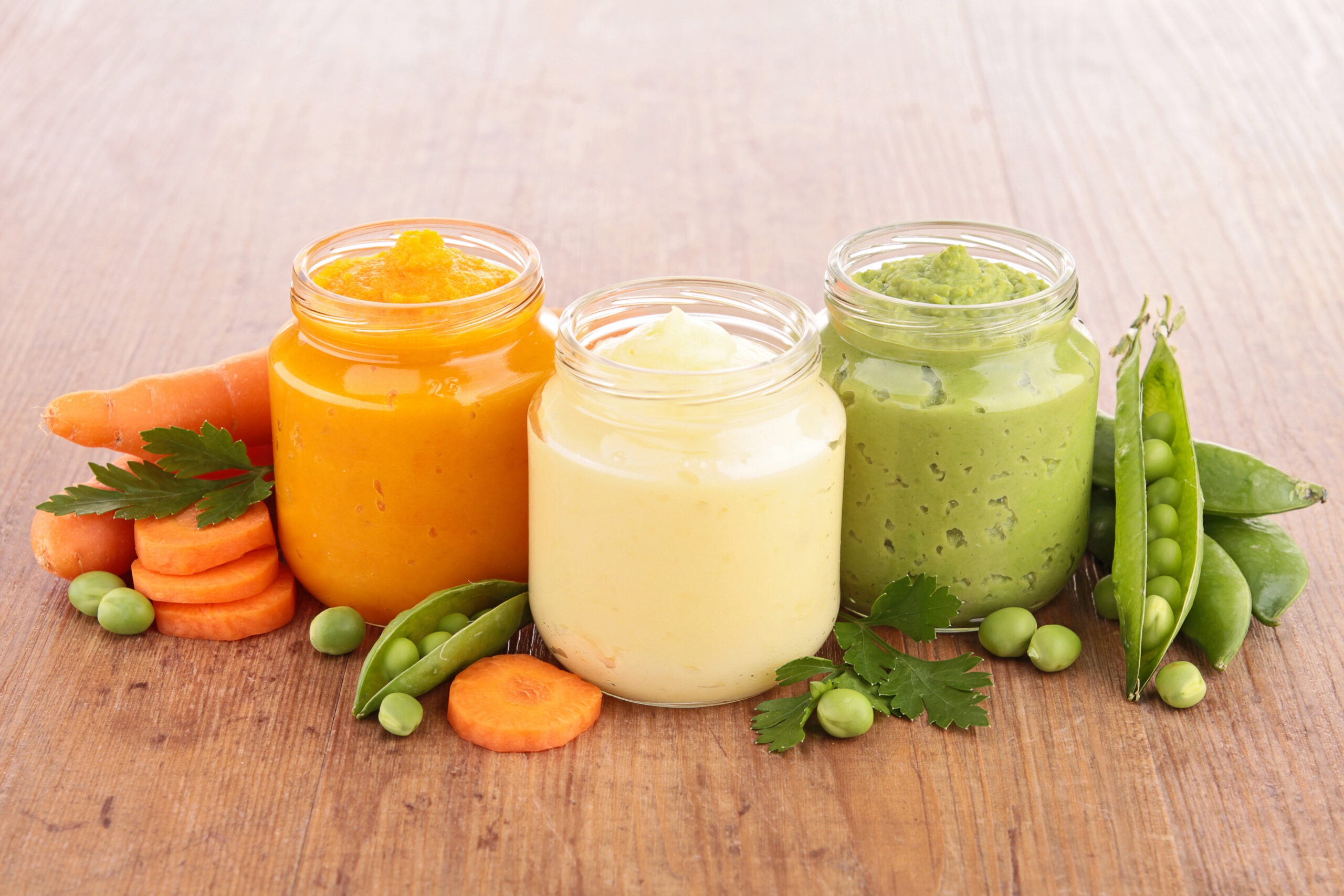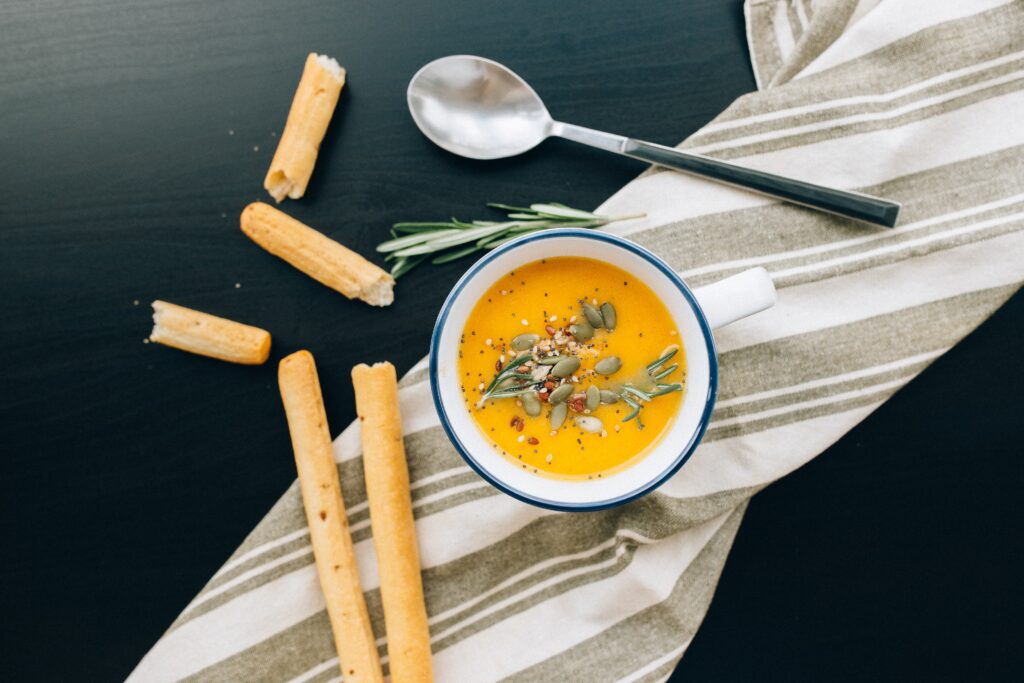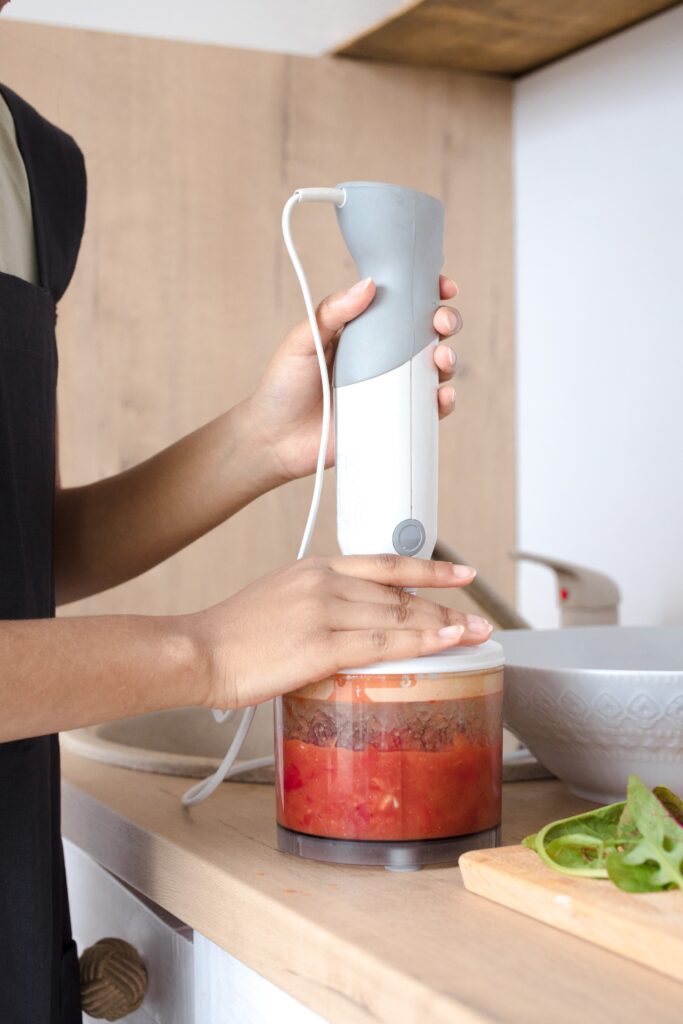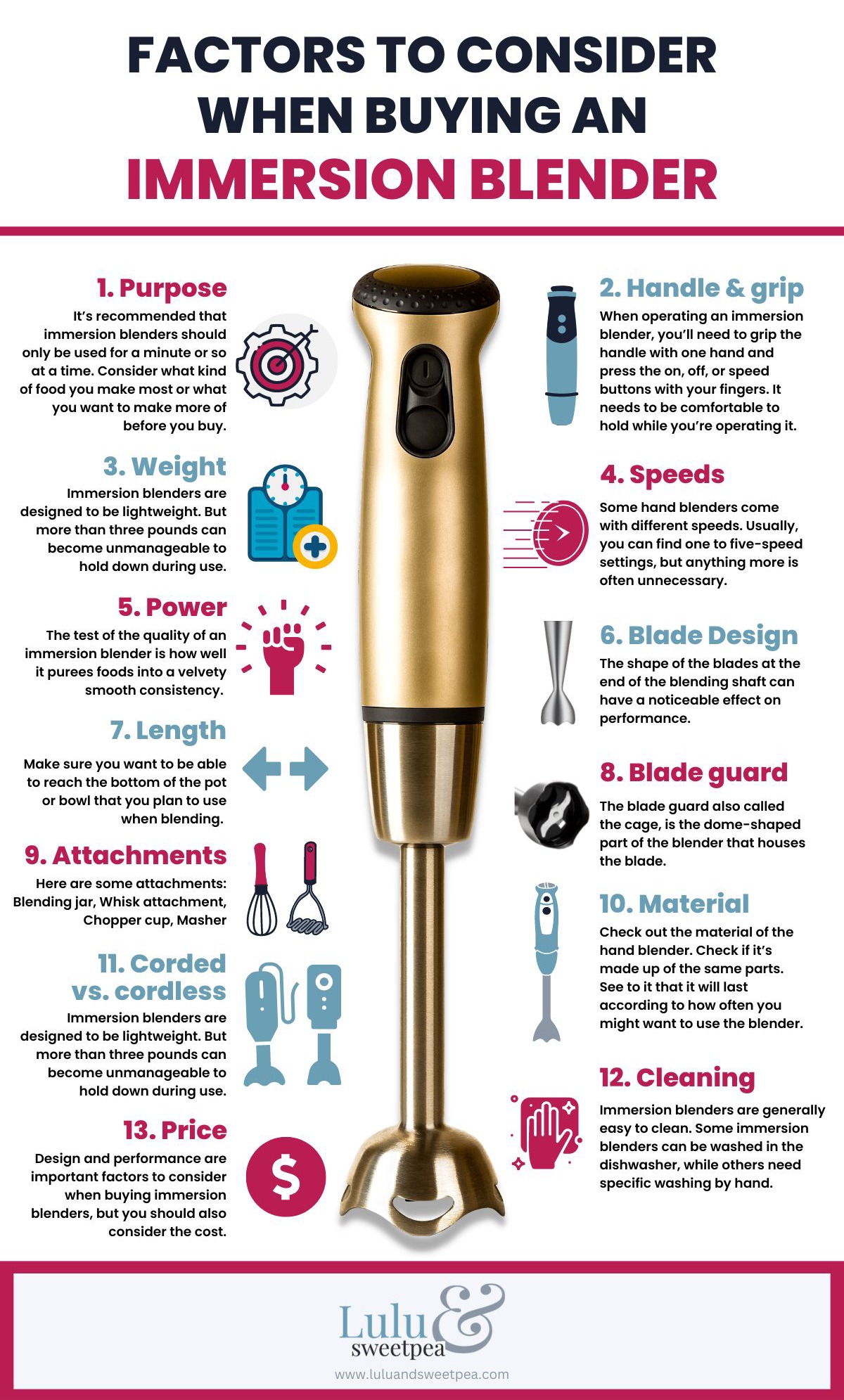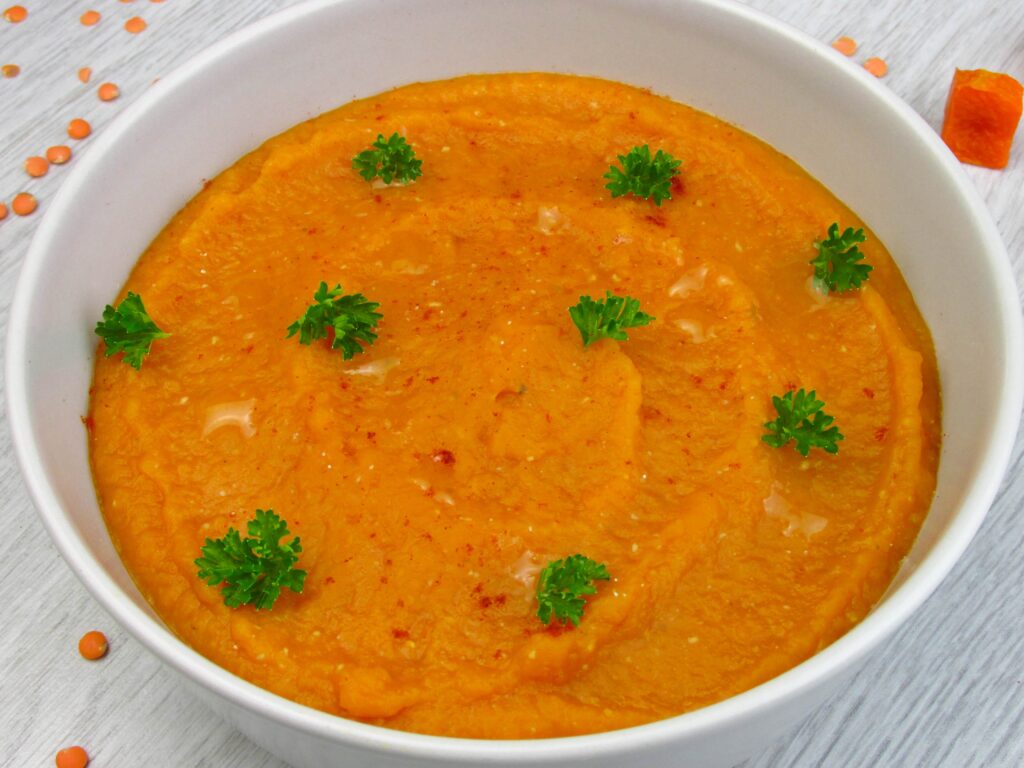As a parent, introducing solid foods to your child is a thrilling moment. However, it can also be overwhelming, particularly when it comes to ensuring that your baby’s meals contain the appropriate nutrients. Purees made at home are an excellent method to introduce nutritious foods to a baby. By making purees at home, you have complete control over the ingredients, ensuring that your child has the best possible start to their eating voyage.
This article will provide guidelines for selecting the appropriate ingredients, essential apparatus, and healthy puree recipes for infants. We will also provide advice on how to introduce new flavors and sensations to your infant. Whether you are a first-time or experienced parent, we hope that this article will inspire you to prepare nutritious and tasty purees for your child.
Choosing Ingredients
According to the American Academy of Pediatrics, it is not necessary to give food in a specific order to the majority of children. Your infant can begin solid foods around 6 months of age. By the time he or she is 7 or 8 months old, your infant will be able to consume a variety of foods from various food groups. These nutrients include cereals for infants, meat and other proteins, fruits, vegetables, grains, yogurts, cheeses and other favorite snacks, among others.
Organic foods for should be chosen in pureeing because the manner in which your food is grown has a significant impact on your mental and emotional health as well as the environment. Organic foods typically contain more beneficial nutrients, such as antioxidants, than their conventionally-grown counterparts, and individuals with food, chemical, or preservative allergies may experience a reduction or elimination of symptoms when they consume only organic foods.
Produce grown organically contains fewer pesticides. In conventional agriculture, residues of chemicals such as synthetic fungicides, herbicides, and insecticides persist on (and in) the food we consume. Organic food is typically fresher than conventional food because it does not contain preservatives.
Making homemade baby food is a straightforward process. Cook the food, allow it to cool slightly, and then pulverize it in a blender or food processor. Additionally, a stick mixer or immersion blender may be used. Puree and blend infant foods as your imagination and baby’s age permit. Don’t be hesitant to puree, for instance, sweet potatoes with apples. And use breast milk and/or formula without fear. These two ingredients will enhance baby’s nutrition and provide a familiar flavor!
Equipment and Preparation
Purées may be prepared in a food processor or blender, by forcing the food through a sieve or strainer, or with specialized apparatus such as an immersion blender, potato masher, or ricer. Generally, purées are cooked to enhance flavor and texture and reduce water content. Typically, vegetable purées diluted with water or stock are used as a soup base or as a side dish. Tomato purée for sauces and stews is produced by removing the seeds from blanched tomatoes and straining out the pulp. Fruit purées are used to create sauces, mousses, soufflés and other preparations. Canapé fillings can also be prepared from anchovies, poultry livers, shrimp, or salmon purées.
Obviously, you’ll need something to purée your homemade infant food. To begin, a standard blender, food processor, or hand-held stick blender will suffice. Due to the prevalence of smoothies, there are numerous excellent individual blenders available on the market.
Immersion blenders are among the best kitchen tools to use for making purees. If you are thinking of buying one, take a look at the graphic below to learn about the important things to consider:
After they have been blended or puréed, you will need a way to cook the infant food. Consider using a basic vegetable steamer, a cooking vessel duo, or an electric vegetable steamer.
Tips for Preparing Puree
- Step 1: Prepare the vegetable or fruit by steaming, baking, microwaving, or heating. The most nutrients are retained by steaming. Steaming, baking, and simmering all allow for the simultaneous preparation of large quantities of food. The sweet potato in the example below was steamed – delicious!
- Step 2: Transfer the cooked vegetables or fruits to the chosen pureeing appliance.
- Step 3: Reserve the cooking liquid from the vegetables/fruits. This is the liquid that will be added to the puree. The addition of this liquid helps preserve any nutrients that may have leached into the culinary water.
- Step 4: Set your machine to puree or mill and begin mashing the fruits and vegetables.
- Step 5: While pureeing or blending, incorporate the liquid or simple water. If desired, you may use formula or breast milk. These liquids provide a nutritional boost and a familiar flavor for the infant.
Healthy Puree Recipes
Fruit Purees
1. Scrape the fruit. This infant purée can be made with any fresh fruit or combination of fruits. Choose fruits that are in season to save money.
2. Remove the seeds and core before cutting the fruit into tiny pieces.
3. Add fruit to boiling water in a saucepan.
4. Boil until tender.
5. Drain the water away.
6. Utilize a potato masher to pulverize. Or blend until homogeneous in a food processor or blender
7. Stir in sufficient breast milk or infant formula to create a uniform purée.
8. Freeze leftover purée in ice cube containers.
Vegetable Purees
1. Choose mature, fresh vegetables. The most flavorful and nutrient-rich purées are prepared with the most flavorful and ripe vegetables. Choose vegetables with robust, vibrant flesh and color. Avoid eating bruised or tender vegetables.
2. Cleanse the produce. Be careful to remove all traces of dirt from the vegetables by running them under a stream of cold water.
3. The vegetables should be peeled if necessary. Using a knife, trim the top and bottom extremities of your vegetables and remove any bruised areas.
4. The vegetables should be sliced thinly.
5. Bring several inches of water to a boil in a large saucepan.
6. The vegetables should be steamed for 15 to 20 minutes.
7. Place the prepared vegetables in a large basin.
8. Utilize a food processor or mixer. Transfer approximately 1 cup of the cooked vegetables from the basin to the blender or food processor. Blend the vegetables in batches, adding water as needed to obtain a smooth consistency.
9. Vegetable purée can be refrigerated for up to one week. Place the purée in hermetic containers (such as sterilized glass jars) and refrigerate until ready to use, for up to one week.
Pears and Ricotta Purees
Ingredients:
- 125g ricotta
- 2 tablespoons of unsweetened, normal, high-protein yogurt (any variety)
- Three canned pears (lite, no added sugar)
- 1/2 tsp vanilla essence
- 1/4 teaspoon cinnamon plus additional for topping
Instructions:
- Using a mini food processor or stick blender, thoroughly puree all the ingredients until homogeneous.
- To serve, divide into ramekins and garnish with additional cinnamon.
Classic Egg Salad Purée
Ingredients
- 2 hard-boiled eggs
- 1 tablespoon of low-calorie mayonnaise
- 1 teaspoon of basic Greek yogurt
- pepper and salt to flavor
Instructions
- Slice 2 hard-boiled eggs
- Put egg segments in a food processor.
- Chop eggs until they are in small fragments.
- To diced eggs, add mayonnaise, Greek yogurt, and seasonings.
- Blend until the egg salad is completely smooth.
Tips for Feeding Purees to Babies
When it comes to introducing solid foods to a baby, varying opinions exist depending on whom you question. Should you begin when the child is 4 or 6 months old? Allow your child to test out the high chair a few days prior to beginning substantial foods. Allow them to become accustomed to reclining in the chair and ensure they can do so with minimal assistance.
Utilize a small plastic bowl and a plastic infant spoon, which are kinder to the gums than metal ones. To prevent spoon tug-of-war, provide your infant with a separate spoon to engage with during meals. Allow your child to interact with his food. Babies and children can experience the texture, scent, and appearance of food by playing with it. This can make the baby’s diet less intimidating and more appealing.
Timing the feeding so that your infant is content, alert, and at the optimal level of hunger—neither too ravenous nor too full—is essential. You may wish to begin the meal with a small quantity of infant formula or breastmilk to stimulate their appetite, followed by the main dish.
Simply acclimating your infant to various textures and flavors is a part of introducing solids. Remember that just exposing your baby to the sight and feel of a novel food can help him or her accept it.
You want your infant to feel heard and seen, and to develop the ability to self-regulate nutrition. When infants are forced to consume food despite expressing a desire to abstain, it conveys the message that their internal cues are not respected.
Remember that your infant cannot say, “Enough with the puréed peas already!” Therefore, it is crucial that you learn the subtle ways in which your baby communicates that he or she is full.
Conclusion
Indeed, making homemade purees for your infant is an excellent method to introduce them to nutritious and healthy foods. By adhering to the guidelines for selecting age-appropriate ingredients and preparing them properly, you can ensure that your infant receives the proper nutrients for growth and development. This article provides a variety of healthy puree recipes that allow you to experiment with different flavors and combinations to keep your infant interested in and engaged with their food.
Always remember to follow the feeding guidelines to progressively introduce new flavors and textures, as well as to observe safety precautions when feeding your baby. By preparing purees at home, you can rest assured that your infant is receiving the finest possible start to their eating journey.

